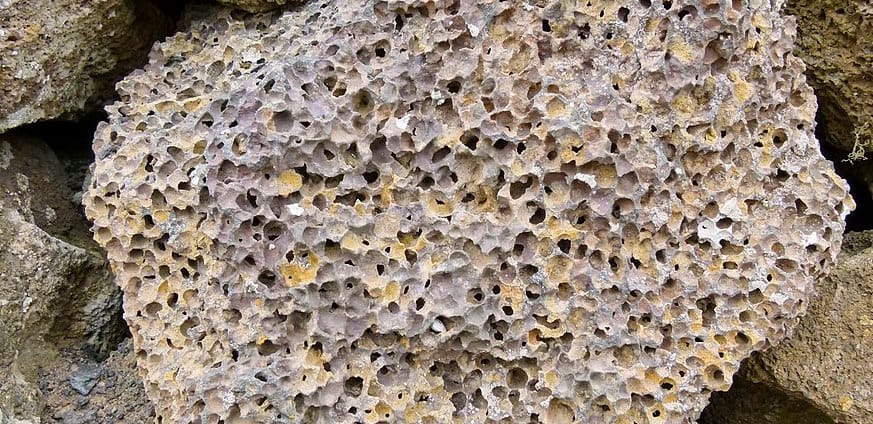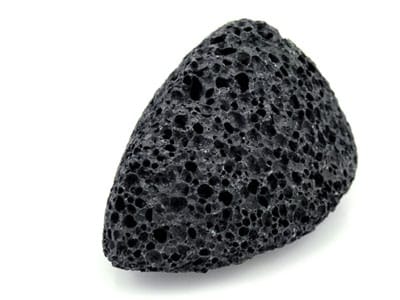Volcanic Pumice Stone: Nature’s Secret for Smooth Skin and Eco-Friendly Exfoliation
Discover volcanic pumice stone, a natural exfoliator with eco-friendly benefits. Learn its skincare uses and tips for safe, effective application. Explore now!
Have you ever wondered about the mysterious volcanic rock that floats on water? That’s pumice stone, a fascinating product of nature’s fiery forces. As a volcanic rock formed through rapid cooling and depressurization of molten lava, pumice has captivated scientists and beauty enthusiasts alike for centuries.
I’ll take you on a journey to explore the unique properties of pumice stone, from its lightweight, porous structure to its versatile applications. We’ll investigate into how this natural wonder is created during volcanic eruptions and why it’s become a staple in skincare routines worldwide. Whether you’re curious about geology or looking for an eco-friendly exfoliation tool, you’ll discover why pumice stone has stood the test of time.
What Is Volcanic Pumice Stone?
Volcanic pumice stone is a unique type of extrusive volcanic rock formed during explosive eruptions. It’s characterized by its lightweight, porous structure and rough texture, making it distinct from other volcanic rocks.
Formation and Characteristics
Volcanic pumice stone forms when highly viscous, gas-rich lava is rapidly ejected from a volcano. As the lava depressurizes, gases expand, creating a frothy texture. This process traps many air bubbles within the cooling lava, resulting in pumice’s signature porous structure. The rapid cooling prevents crystals from forming, giving pumice its glassy appearance.
Pumice’s most notable characteristics include:
- Extreme porosity (64-85% by volume)
- Low density (0.35-0.65 g/cm³)
- Light color (typically white, gray, or tan)
- Rough, abrasive texture
- Ability to float on water due to trapped air bubbles
These unique properties make volcanic pumice stone ideal for various applications, from skincare exfoliation to industrial uses. Its formation process and distinctive features set it apart from denser, less porous volcanic rocks like scoria.
Benefits of Using Volcanic Pumice Stone
Volcanic pumice stone offers many advantages for skincare and body maintenance. Its unique porous structure and natural abrasiveness make it an excellent tool for various beauty and wellness applications.
Exfoliation and Skin Care
Volcanic pumice stone excels as a natural exfoliator, effectively removing dead skin cells and revealing smoother, healthier skin. Its abrasive texture provides gentle yet thorough mechanical exfoliation, making it ideal for treating rough areas like elbows and knees. Regular use of a pumice stone can significantly improve skin texture, promoting a softer and more radiant appearance. The stone’s porous nature allows it to retain water, creating a slightly moist surface that enhances its exfoliating properties while minimizing irritation.
Foot and Callus Care
For foot care, volcanic pumice stone is particularly effective in managing calluses and rough patches. Soaking feet in warm water before using the stone softens the skin, allowing for easier removal of dead cells and calluses. Gently rubbing the pumice stone in circular motions over affected areas helps smooth out rough patches and reduce the thickness of calluses. This natural tool is especially useful for maintaining soft heels and preventing the build-up of hard skin on the feet. Regular use of a pumice stone as part of a foot care routine can lead to noticeably smoother, more comfortable feet.
How to Use Volcanic Pumice Stone
Volcanic pumice stone is an effective natural exfoliator for various body parts. Its porous structure and gentle abrasiveness make it ideal for removing dead skin cells and smoothing rough patches. Here’s how to use this versatile tool safely and effectively on different areas of your body.
Proper Techniques for Different Body Parts
For feet, soak them in warm water for 5-10 minutes to soften the skin. Wet the pumice stone and gently rub it in circular motions over calloused areas, focusing on heels and balls of the feet. On hands, use light pressure to exfoliate rough patches, paying attention to knuckles and palms. For elbows and knees, apply the stone with moderate pressure in short, circular strokes. Rinse the stone frequently during use to remove dead skin cells. After exfoliating, rinse the treated area thoroughly and apply a moisturizer to lock in hydration.
Safety Precautions
Always wet the volcanic pumice stone before use to prevent excessive abrasion. Apply gentle pressure to avoid damaging healthy skin. Don’t use the stone on broken, irritated, or sunburned skin. Clean the pumice stone thoroughly after each use with soap and water to prevent bacterial growth. Replace the stone every 3-4 months or sooner if it shows signs of wear. If you have sensitive skin or a medical condition, consult a dermatologist before incorporating a pumice stone into your skincare routine. Discontinue use if you experience redness, irritation, or discomfort.
Choosing the Right Volcanic Pumice Stone
Selecting the ideal volcanic pumice stone requires careful consideration of several factors. The right stone can significantly enhance your skincare routine and provide effective exfoliation.
Quality Indicators
High-quality volcanic pumice stones exhibit exact characteristics that ensure optimal performance. Porosity and density are crucial factors, with superior pumice stones having a porosity range of 64% to 85% by volume and a low bulk density under 0.65 g/cm³. These properties contribute to the stone’s effectiveness in exfoliation and its lightweight nature. The composition of the pumice stone is also important, primarily consisting of silicon dioxide (SiO2) and aluminum oxide (Al2O3). Look for stones with a uniform texture and minimal impurities to ensure consistent results during use.
Size and Shape Considerations
When choosing a volcanic pumice stone, size and shape play vital roles in its functionality and ease of use. Opt for a stone that comfortably fits in your hand, typically around 3-4 inches in length. The shape should allow for easy maneuvering around contours of your body, particularly for use on feet, elbows, and knees. A slightly curved or ergonomic shape can provide better control and reach for hard-to-access areas. For foot care, a larger stone with a flat surface may be more suitable for covering larger areas efficiently. Consider your exact needs and the areas you’ll be treating when selecting the size and shape of your pumice stone.
Caring for Your Volcanic Pumice Stone
Proper care of your volcanic pumice stone ensures its longevity and effectiveness. Here’s how to maintain this natural exfoliating tool:
Cleaning After Use:
- Rinse thoroughly under warm water to remove dead skin cells and debris
- Use a soft brush to gently scrub away any stubborn particles
- For deep cleaning, soak in warm water for 5-10 minutes
Drying and Storage:
- Shake off excess water after rinsing
- Place the stone in a well-ventilated area to air dry completely
- Store in a dry location to prevent mold growth
Sanitizing:
- Boil the pumice stone for 5 minutes once a month
- Alternatively, soak in a mixture of 1 part white vinegar and 4 parts water for 30 minutes
Maintenance Tips:
- Inspect regularly for signs of wear or crumbling
- Replace every 3-4 months or when the stone loses its abrasive quality
- Avoid sharing your pumice stone to prevent bacterial transmission
By following these care instructions, you’ll extend the life of your volcanic pumice stone and maintain its exfoliating effectiveness. Remember, a well-maintained pumice stone is key to achieving smooth, soft skin without irritation.
Environmental Impact of Volcanic Pumice Stone
Volcanic pumice stone, a product of explosive eruptions, has both positive and negative effects on the environment. Its formation and mining processes, as well as its impact on ecosystems, contribute to its overall environmental footprint.
Formation and Mining
Pumice forms when gas-rich magma rapidly cools and solidifies during volcanic eruptions. This process creates a lightweight, porous rock with unique properties. The mining of pumice is generally considered a low-impact process compared to other mining activities. Surface mining is the primary method, where overburden is pushed aside and stockpiled for later site reclamation.
Even though its relatively low impact, pumice mining can cause important environmental changes:
- Industry alterations
- Habitat destruction
- Soil erosion
These issues arise if mining operations aren’t managed responsibly. But, proper management can minimize these impacts.
Network Effects
Pumice stone affects ecosystems in various ways:
- Soil Enrichment: Over time, pumice breaks down and enriches soil with minerals.
- Water Filtration: Its porous nature makes it an effective natural water filter.
- Habitat Creation: Pumice deposits can create unique habitats for specialized plant and animal species.
But, large-scale mining can disrupt local ecosystems, potentially affecting biodiversity and natural water systems.

Environmental Benefits
Pumice stone offers several environmental benefits:
- Reduced Cement Usage: When used in concrete, pumice can replace a portion of cement, reducing greenhouse gas emissions.
- Natural Alternative: As an abrasive, pumice provides an eco-friendly option to synthetic materials.
- Water Conservation: Its water retention properties make it useful in horticulture, potentially reducing water consumption.
By understanding and managing the environmental impact of volcanic pumice stone, we can harness its benefits while minimizing negative effects on our planet’s ecosystems.
Conclusion
Volcanic pumice stone stands out as a remarkable natural resource with diverse applications. Its unique properties make it invaluable for skincare while its environmental impact remains relatively low compared to other mined materials. By choosing high-quality stones and following proper care instructions we can maximize the benefits of this versatile volcanic rock. Whether you’re a geology enthusiast or a beauty aficionado pumice stone offers a fascinating blend of natural science and practical utility. I’ll continue to explore and appreciate the wonders of this floating rock that’s been shaping our planet and improving our lives for millennia.

